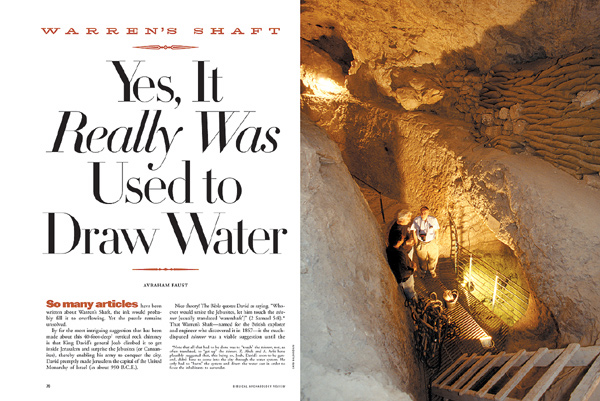Response: Warren’s Shaft

In the oldest part of Jerusalem, a remarkable underground shaft, 40 feet long, connects two tunnels—one longer and higher, the other shorter and lower; the lower tunnel leads to the city’s ancient water supply, the Gihon Spring. The shaft was discovered in the 1860s by that great British explorer of Jerusalem, Charles Warren; it is now known as Warren’s Shaft.
For many years, Warren’s Shaft was famous because it was thought that King David’s general, Joab, may have gotten inside the well-defended city (subsequently capturing it) by climbing up this shaft. The Bible tells us that David said that whoever would conquer Jerusalem would get up the tsinnor, usually translated watershaft (2 Samuel 5:8). Warren’s Shaft, it was argued, was the tsinnor.
Everything about this story is hotly debated. Some say tsinnor does not mean watershaft. Others say no one could climb such a slippery vertical shaft. Still others say the shaft is a natural karstic chimney that was never used to draw water. And a recent excavation by Ronny Reich and Eli Shukron has shown that the floor of the upper tunnel did not reach the top of the shaft until the eighth century B.C.E., long after King David had conquered the city. Jerusalem may have been conquered when Joab entered it via a tunnel that led from inside the city wall to the Gihon Spring, but, if he did, it wasn’t Warren’s Shaft.
Already a library member? Log in here.
Institution user? Log in with your IP address.

